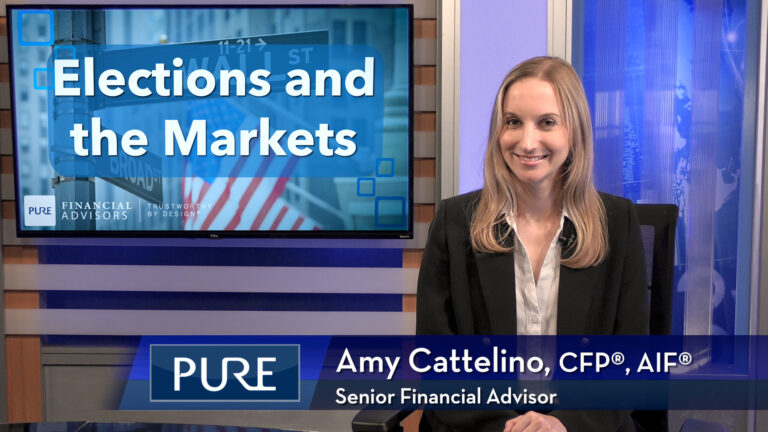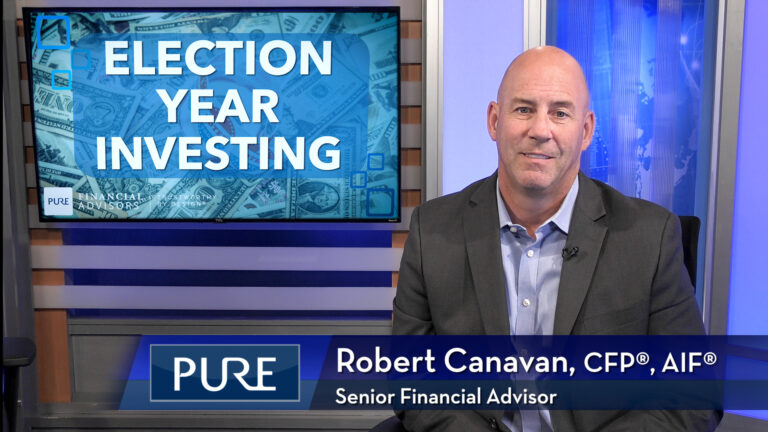The tax deadline (April 18) is quickly approaching and it’s that time of year to prepare for your tax return. Pure’s Financial Planner, Scott Huband, CFP®, AIF®, takes you through a quick checklist to make sure you have all the right documents and deductions.
FREE GUIDE | 2023 Tax Planning Guide
Transcript
Tax season is nearly upon us and now is a great time to get started to be ahead of the curve. For most of the country, the tax filing deadline this year is April 18, but it is May 15* for CA disaster areas which pretty much covers the whole state, but check the IRS website to confirm who qualifies. I know it can be a painful process, and it may seem like we just got done with last year’s return, but if you follow our simple checklist, we’ll try to make it as easy on you as possible!
Initial Documents and Information Needed
Your 2021 tax return, and your 2022 income and deduction materials. You can use your 2021 return as a guide, but think about what income and deduction items you expect and whether you will need a reporting form. In the meantime, you can use documents you already have to get started. For wages, your last paystubs can help you create an estimate, but look for a W-2 by January 31st. Create a business profit & loss statement and watch for Form 1099’s. Use year-end brokerage statements, which may come with your consolidated 1099 form. Get your escrow documents for properties purchased & sold or rental statements.
For your 2022 deductions, get your mortgage interest, reported on Form 1098, charitable donations, unreimbursed medical expenses, and other known deductible expenses. Remember, if you have escrow with your mortgage, you may also receive a 1099-INT for interest from the bank that holds the mortgage.
Second, make a Baseline Income Tax Projection, which is just a quick tally to give yourself an idea of what you may owe or what you may expect back as a refund. Then, add your estimated income and subtract estimated deductions to determine your likely taxable income. You can use the tax table to get an idea what the tax will be. Then subtract the estimated payments you made and withholdings to determine what you will owe or whether you will owe any tax at all.
Next, review the nature of your interest & dividends. Certain interest and dividend payments are subject to favorable tax treatment. Municipal bond interest is tax-free on your federal return and most state returns. Qualified dividends are taxed at a preferential long term capital gains rates.
Be sure to, Fully fund your traditional IRA or Roth IRA. You must have earned income to qualify to contribute to a Roth IRA. In 2022, individuals who qualify to make a maximum contribution to an IRA or a Roth IRA can contribute up to $6,000, or $7,000 if they are over age 50 at the end of the calendar year.
Then, check the new rules on credits and deductions. If you have dependent children, you may qualify for the Child tax credit: In 2022, the Child Tax Credit returns to its 2019 amount: up to $2,000 per eligible child. If you bought a qualifying electric or plug-in hybrid vehicle in 2022, you may qualify for the Clean Energy Vehicle Credit: tax credits of up to $7,500 are still available for qualifying electric and plug-in hybrid vehicles, but eligibility rules have changed.
Next, report capital gains and deduct capital losses from your investments. Remember that capital gains taxes aren’t based on the value of your investments; they’re based on the profits you realize when you sell an investment for more than you paid. If you didn’t sell any investment assets in 2022, you don’t owe anything, at least for capital gains (dividends or interest payments still count as taxable income). However, if you sold stocks, mutual funds, real estate, cryptocurrency, or another investment for a profit, you must report the gain on your tax return and pay applicable capital gains taxes. If you sold investments for a capital loss, you can use your loss to offset other capital gains for the year. You may also deduct up to $3,000 in capital losses against your ordinary income and carry over the remaining loss until you use it up by offsetting capital gains and offsetting $3,000 of ordinary income in following years.
As for charitable strategies, look for ways to make the most of your charitable giving. As many people are no longer able to itemize their deductions under the new tax laws enacted in 2017, there are still a few ways to get a tax benefit for your charitable giving. You could consider bunching your charitable gifts. For example, you could “bunch” two years of giving into one tax year or you could set up a Donor Advised Fund. Gifting appreciated assets directly to charity, or to a Donor Advised Fund can be better than cash contributions. When you gift an appreciated asset, the value of the asset on the date of the donation is your charitable deduction, and you will not be subject to any capital gains taxes as long as you held the asset for at least a year before donating it.
Qualified Charitable Distribution (QCD)
If you’re over age 70 ½, you may contribute your distributions from your IRA directly to the charity. This is called a Qualified Charitable Distribution or QCD. If you are charitably inclined, this is a way to take a tax-free distribution even if you don’t itemize your deductions. An individual donor can distribute up to $100,000 per year in QCDs.
There you have it, your tax planning checklist! Now you’re ready to tackle those taxes, right!? Well, if this just got your head spinning and you could use some guidance in sorting out your options, contact Pure Financial Advisors for a free tax analysis today!
*Note: After this video was filmed, the IRS extended the May 15 deadline to October 16 for disaster area taxpayers in California, Alabama, and Georgia. Click here for more information.
Subscribe to our YouTube channel.
IMPORTANT DISCLOSURES:
• Investment Advisory and Financial Planning Services are offered through Pure Financial Advisors, LLC, a Registered Investment Advisor.
• Pure Financial Advisors LLC does not offer tax or legal advice. Consult with your tax advisor or attorney regarding specific situations.
• Opinions expressed are subject to change without notice and are not intended as investment advice or to predict future performance.
• Investing involves risk including the potential loss of principal. No investment strategy can guarantee a profit or protect against loss in periods of declining values.
• All information is believed to be from reliable sources; however, we make no representation as to its completeness or accuracy.
• Intended for educational purposes only and are not intended as individualized advice or a guarantee that you will achieve a desired result. Before implementing any strategies discussed you should consult your tax and financial advisors.
CFP® – The CERTIFIED FINANCIAL PLANNER™ certification is by the Certified Financial Planner Board of Standards, Inc. To attain the right to use the CFP® designation, an individual must satisfactorily fulfill education, experience and ethics requirements as well as pass a comprehensive exam. Thirty hours of continuing education is required every two years to maintain the designation.
AIF® – Accredited Investment Fiduciary designation is administered by the Center for Fiduciary Studies fi360. To receive the AIF Designation, an individual must meet prerequisite criteria, complete a training program, and pass a comprehensive examination. Six hours of continuing education is required annually to maintain the designation.














